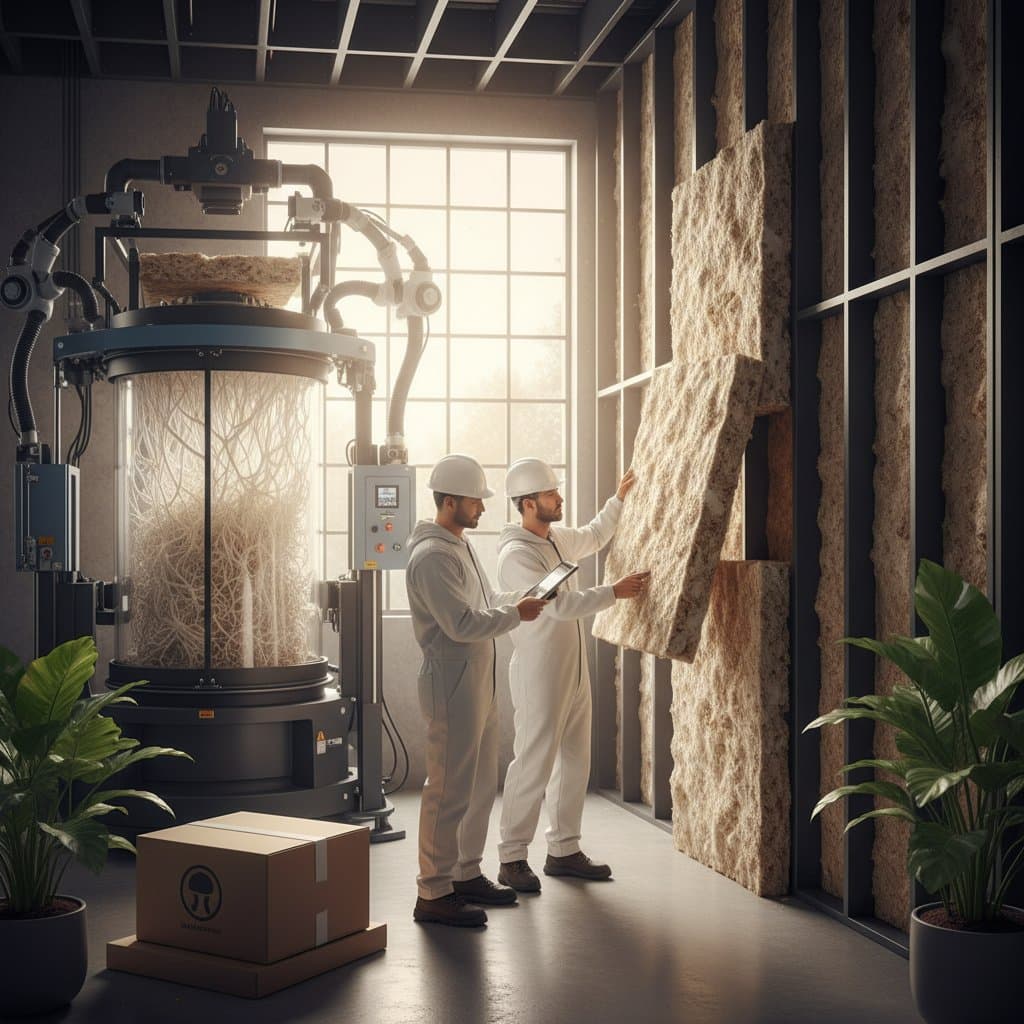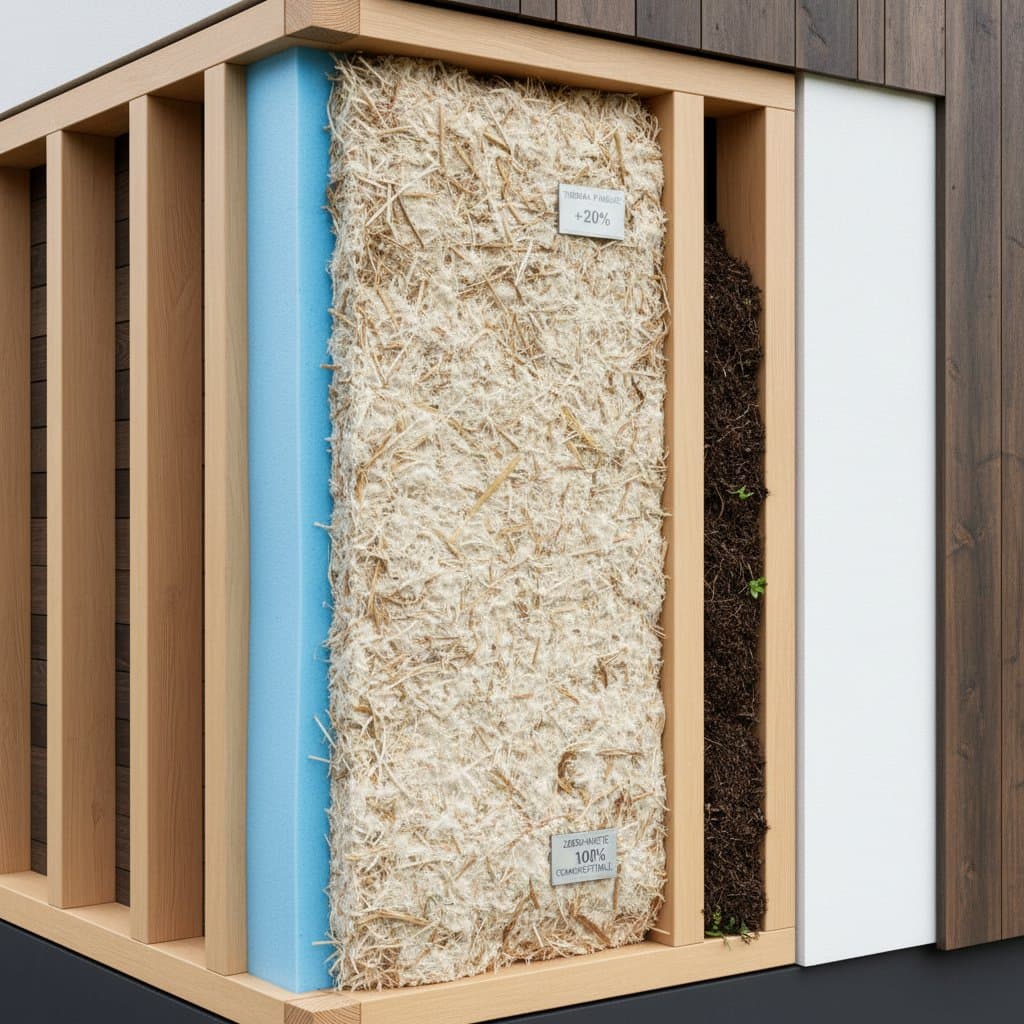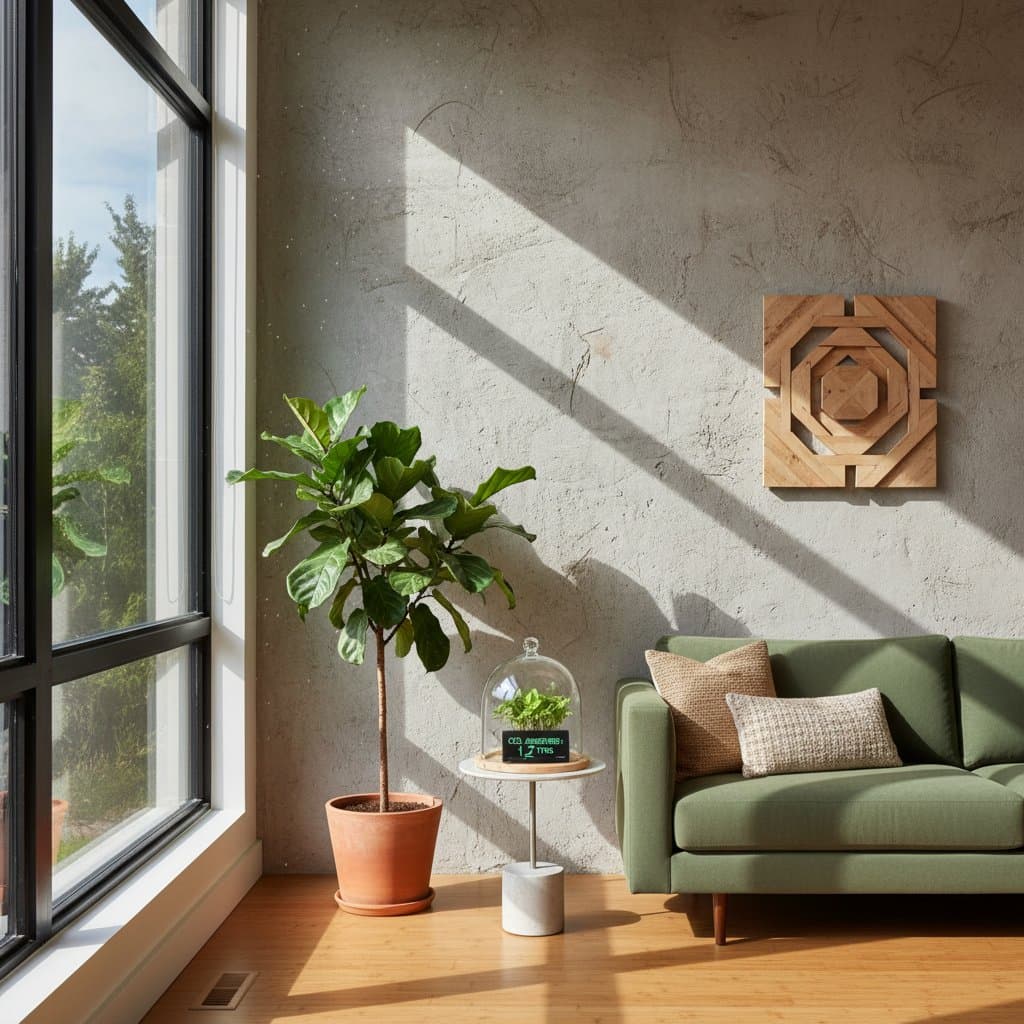Key Points
- Mycelium insulation, derived from fungal roots, stands out as a leading sustainable building material in current applications.
- The product maintains steady temperatures, withstands fire exposure, and decomposes completely to avoid waste accumulation.
- Production scaling reduces expenses, positioning it as an accessible option for environmentally aware homeowners and contractors.
- Professional installation guarantees long-term performance and adherence to regional sustainable building standards.
- Integration of mycelium insulation substantially lowers the carbon footprint in new constructions and renovations.
From Forest Origins to Modern Structures: The Emergence of Mycelium Insulation
Professionals in green building observe homeowners frequently confronting a common issue: achieving effective insulation without relying on harmful, non-renewable substances. Imagine entering a new home where the scent is fresh and free of chemicals. The atmosphere remains comfortable, with stable temperatures, all within walls cultivated from mushrooms. This scenario represents current advancements, not distant fantasy, in the field of mycelium insulation.
The concept of utilizing a substance from forest floors to surpass fiberglass in environmental harmony draws interest from sustainability specialists. For individuals dealing with increasing energy expenses or contemplating renovations, this biological innovation serves as a pathway to convert residences into exemplars of ecological stewardship.
Challenges of Traditional Insulation Materials
Materials such as fiberglass, polystyrene, and mineral wool have held market dominance for decades. These options deliver solid thermal performance, yet they carry concealed drawbacks. Production often involves petrochemicals, gradual release of volatile organic compounds, and limited recyclability. Upon removal, such materials typically accumulate in landfills, persisting for hundreds of years.
Field experience reveals homeowners contending with degraded fiberglass sections, excess moisture, and compromised indoor air quality. These issues intensify in humid environments, where saturated insulation diminishes effectiveness by up to 30 percent. The manufacturing process for conventional insulation demands substantial energy and generates considerable carbon emissions, raising broader environmental concerns.
How Mycelium Transforms Insulation Practices
Mycelium, the underground network of fungi, introduces an innovative alternative. Grown using agricultural byproducts like straw or corn husks, it develops into lightweight, foam-resembling panels. A heat treatment halts growth, resulting in a robust, fire-resistant, and fully decomposable product suitable for immediate use.
Green building specialists advocate for mycelium insulation due to its equilibrium of functionality and ecological benefits. The material achieves fire resistance through inherent properties, without added chemicals. It manages humidity by absorbing and expelling moisture as needed and attains an R-value on par with established insulation types. Manufacturing requires minimal energy and results in net carbon sequestration, absorbing more carbon than released.
Dr. Lena Ortiz, a materials scientist and sustainability consultant, stated, "Mycelium insulation represents a living solution to a manmade problem. It redefines what we consider waste and turns it into value."
Strategies to Enhance Home Energy Efficiency
For those evaluating this material, consider these steps to integrate it successfully:
1. Perform a Materials Assessment
Prior to any insulation replacement, evaluate the building envelope. Locate energy loss points in areas like attics, crawl spaces, and wall voids. Employ a blower door test conducted by a specialist to identify air infiltration that compromises performance.
2. Select Appropriate Mycelium Variants
Available forms include:
- Rigid boards suited for walls and ceilings
- Loose-fill ideal for attics and uneven spaces
- Custom molded panels designed for modular builds
Selection hinges on structure type, local climate, and desired outcomes. Thicker boards benefit cold zones, whereas breathable loose-fill supports moisture equilibrium in damp regions.
3. Prioritize Accurate Installation
Mycelium insulation permits safe handling for do-it-yourself projects, but expert application secures tight seals and proper placement. Unsealed gaps may cut efficiency by 25 percent. Confirm that workers possess training in bio-based material management.
4. Combine with Supportive Sustainable Features
Incorporate mycelium insulation alongside:
- Passive solar elements to capture natural warmth
- Energy-efficient glazing to minimize heat transfer
- Vegetated roofs or facades to augment external insulation
These integrations form a cohesive system that operates effectively across seasons.
5. Plan Routine Evaluations
Examine insulation biennially to verify condition, particularly in areas susceptible to dampness. Mycelium naturally repels mold, yet adequate airflow preserves its durability over time.
Essential Factors for Homeowners
Pricing and Accessibility
Initial mycelium insulation variants carried premium costs, but increased adoption aligns prices with other sustainable choices. Panels range from $3 to $4 per square foot, with labor adding $1 to $2 based on project demands. Although initial outlay exceeds basic fiberglass, savings from reduced utility bills and extended service life offset expenses quickly.
Ecological Advantages
During cultivation, each panel captures and stores carbon that might otherwise contribute to atmospheric levels. Full biodegradability ensures zero residual impact at end-of-life. For projects seeking LEED certification, mycelium contributes credits in materials and resource sectors.
Project Duration and Scale
Production of cultivated insulation completes in less than three weeks, accommodating both fresh constructions and upgrades. Fitting requires one to three days for typical residences, with low interruption to daily routines.
Safety and Well-Being
In contrast to fiberglass, which may cause skin and respiratory irritation, mycelium poses no handling risks. Absence of toxic adhesives or artificial resins enhances indoor environments. Built-in defenses against fire, insects, and fungi eliminate the need for chemical interventions.
Regulatory Adherence
Numerous jurisdictions incorporate bio-based options into standards. Verify alignment with local codes prior to proceeding. Certified sustainable building advisors assist with paperwork for potential financial incentives.
Observed Outcomes and Climate Adaptability
In coastal zones, where high humidity and saline exposure degrade standard materials, mycelium demonstrates superior endurance. Inland cold areas benefit from its consistent thermal retention, decreasing reliance on supplemental heating.
Practical implementations show energy expenditures for heating and cooling dropping by as much as 30 percent following mycelium upgrades. One resident noted the change as "living inside a natural cocoon that breathes with the seasons."
Optimal results emerge from coordinated approaches, including sealed barriers, ventilation systems, and humidity management.
Steps to Implement Mycelium Insulation
To proceed, engage a qualified green building professional through established channels for an initial assessment. Review local weather patterns, property dimensions, and environmental objectives to identify suitable variants. Inquire about performance metrics, insulation ratings, and integration with current infrastructure.
Adopting mycelium insulation advances beyond mere comfort; it embodies regenerative principles. Every panel functions as a purposeful micro-ecosystem, fostering progress toward sustainable building norms.
View this enhancement within a comprehensive ecological framework. Pair it with solar power adoption, water conservation measures, and harmless surface treatments to strengthen overall home resilience and worth.
FAQ
Q: How long does mycelium insulation last?
A: With correct placement and humidity management, mycelium insulation endures 30 to 50 years, comparable to standard products. Stability persists provided it remains dry and shielded from elements.
Q: Can mycelium insulation attract pests?
A: Post-heat treatment, the material offers no nourishment to insects or rodents. Its compact form and inherent elements repel such threats.
Q: Is it suitable for all climates?
A: Yes, mycelium insulation performs across diverse conditions, from heat to cold. Natural humidity adjustment suits fluctuating weather patterns.
Q: How soon can I expect a return on investment?
A: Reductions in energy use appear in the first year for most properties, with complete cost recovery in 5 to 8 years through efficiencies and minimal upkeep.









